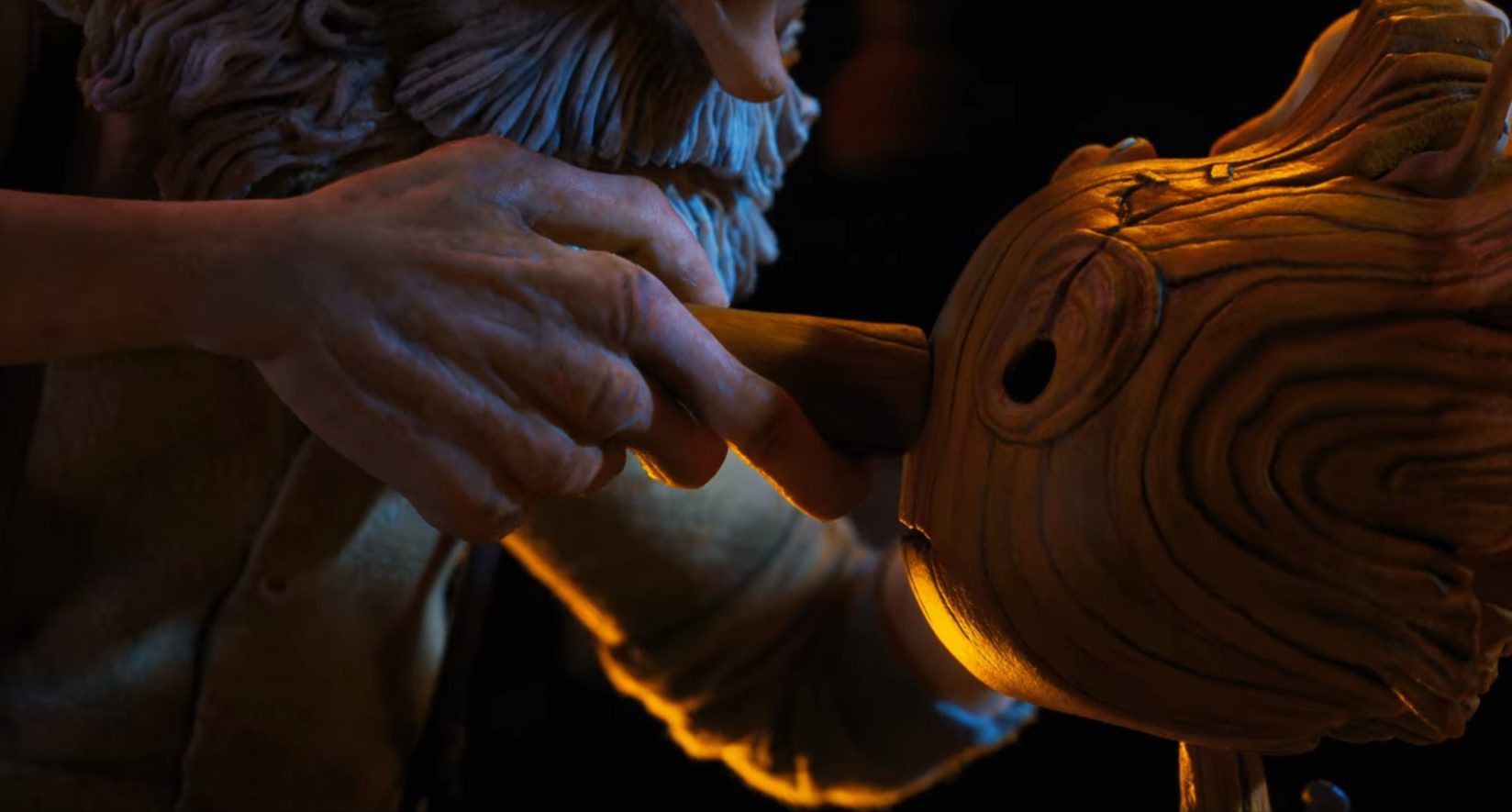‘Guillermo del Toro’s Pinocchio’ Was Worth The Decade-Plus-Long Wait
4.5 out of 5 pinecones.

After nearly 15 years of delays, disruptions, and crafting (some shots took months!), Netflix finally released the stop-motion masterpiece by Guillermo del Toro and Mark Gustafson, Pinocchio. Something between a reimagining and an inspired take, the story follows the creation and adventures of a wooden puppet made alive by magic. Pinocchio was carved in a drunken rage following the death of artist Geppetto’s son Carlo. The name is an ode to the creator of the original creator of the story, Carlo Collodi, and the story is narrated (mostly) by Sebastian J. Cricket—whose connection to the story is too cute to spoil.
Instead of focusing on how Pinocchio misreads the situations he finds himself in, as many adaptations do, del Toro and Gustafson—along with co-screenplay writer Patrick McHale and co-story writer Mathew Robbins—make the central relationship of Geppetto and Pinocchio the heart of the movie. Many characters (including Geppetto) are either afraid of this talking puppet or seek to capitalize on his magical attributes for coin and country. However, the father-son relationship has tense moments that, even when they’re separate, show the desire to show love. Sometimes this separation is a physical distance, but it also includes Pinocchio experiencing the afterlife and communicating with the creatures beyond.
Speaking of setting, this entire world felt so lived-in, and the movement of the characters was both natural and not (in terms of non-human characters). These puppets appear to have moved through centuries of history in this fully realized world before the audience arrives at the story and the setting. It’s not just the usual texture felt in stop-motion animation but also how distressed the walls, floor, and clothes are. The wrinkles and hair aren’t for an “old look,” but because the characters come alive and look like they’ve been around for decades. Even as Pinnochio travels with Count Volpe (who dodges the harmful antisemitic coding seen in most adaptions by being an amalgamation of many characters) and the traveling circus, each town feels like it’s ‘developed’ at different rates. Some areas are newly-built wood while others are weathered and look like they were built in ancient Rome.
One of the stronger elements of the world-building, and as I predicted back at the trailer’s release, is the specificity of the fascism creeping in. Many elements of this political ideology stand in absolute opposition to del Toro’s work. While the original serial by Collodi worked to provide travel and moral lessons in the late 1800s, del Toro and Gustafson place the story in the early days of WW1. Il Duce’s presence is felt in the story way before his face appears, in blackshirts costumes and new additions to the landscape of Italy. This isn’t just decoration and scene-setting as these threats exist in the movie’s themes.
The film isn’t perfect. Some of the transitions between Geppetto and Pinnochio’s journey are jarring and clunky. They also stand out because most of the transitions feel so intentional. (Including the music, which I had my doubts about because this is not a musical-musical, but each song really feels essential to the story.) Also, the voice acting is hit or miss.
Some of the weaker performances come from del Toro picking favorites, but others are just not the best. It’s not too distracting because the leads (Gregory Mann, David Bradley, Christoph Waltz, and Ewan McGregor) were perfectly cast. Speaking of, Ewan McGregor should consider narrating audio books because he’s a great narrator—something people who’ve seen Big Fish already know.
Still, it is a version of the story I already want to revisit again and again.
Pinocchio is available to stream on Netflix and in select theaters. Please do yourself a favor and check out Guillermo del Toro’s Pinocchio: Handcarved Cinema on Netflix as a look behind the scenes.
(image: Netflix)
—The Mary Sue has a strict comment policy that forbids, but is not limited to, personal insults toward anyone, hate speech, and trolling.—
Have a tip we should know? tips@themarysue.com